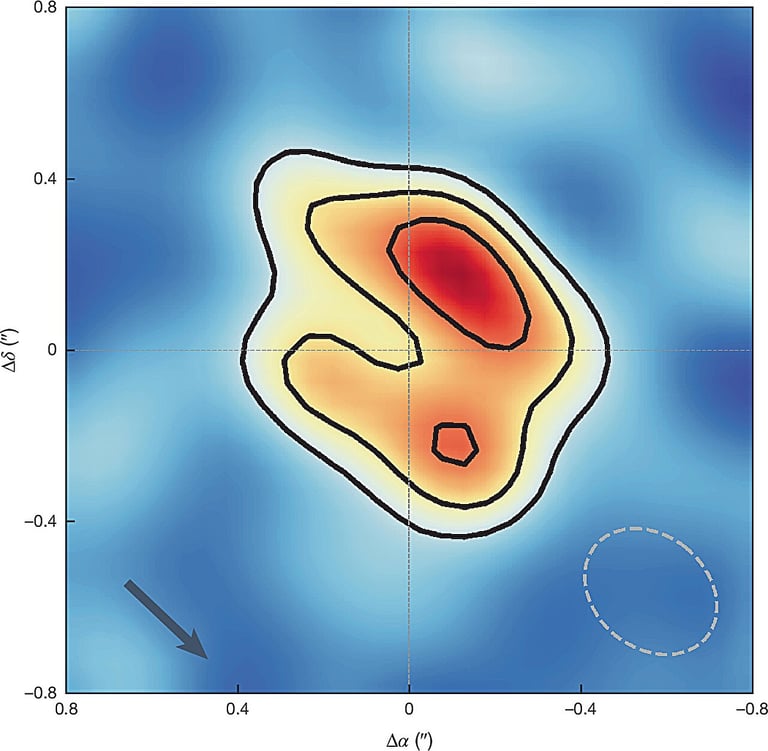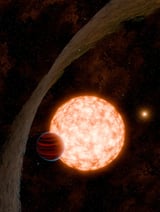Youngest Planet Ever Discovered: TIDYE-1b Challenges Planet Formation Theories
November 20, 2024
The planet was detected due to a unique alignment of its protoplanetary disk, which is misaligned with the star's orbital plane, allowing for easier observation.
Initial hypotheses about the disk's warping suggested gravitational influences from a companion star, but this was ruled out as no such companion has been detected.
A groundbreaking discovery has been made with the detection of IRAS 04125+2902 b, the youngest planet ever observed using the transit method, at just about 3 million years old.
IRAS 04125+2902 b orbits a star located approximately 520 light-years away in the Taurus constellation, within a protoplanetary disk that indicates the star's youth.
This discovery provides crucial insights into the early stages of planet formation, establishing a new benchmark for understanding young transiting planets beyond our solar system.
Researchers believe that IRAS 04125+2902 b is unlikely to become a gas giant like Jupiter, and it may evolve into a 'mini-Neptune' or 'super-Earth,' types of planets common in other solar systems.
The planet's mass and size suggest it has a relatively low density and possibly an inflated atmosphere, which are characteristics of young planets.
The misalignment of the disk poses a challenge to existing models of planetary formation, which typically expect a flat arrangement of forming planets.
This remarkable find was led by Madyson Barber, a graduate student at the University of North Carolina at Chapel Hill, utilizing data from NASA's Transiting Exoplanet Survey Satellite (TESS).
Nicknamed TIDYE-1b, the planet has an orbital period of 8.83 Earth days and a radius about 10.7 times that of Earth, with a mass equivalent to 30% of Jupiter's.
Barber emphasized that studying young transiting systems like TIDYE-1b enhances our understanding of planetary formation and evolution, shedding light on the history of Earth.
The findings were published in the journal Nature on November 20, 2024, marking a significant advancement in the field of exoplanet research.
Summary based on 8 sources
Get a daily email with more Science stories
Sources

Phys.org • Nov 20, 2024
Young planet discovery could provide new insight into planet formation
Digital Trends • Nov 20, 2024
Scientists discover a baby exoplanet "just" 3 million years old | Digital Trends
Space • Nov 20, 2024
Scientists find extremely young exoplanet orbiting star with a wonky disk